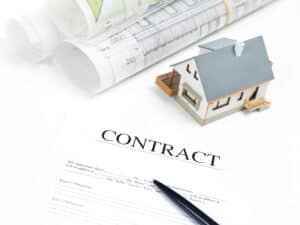What Does “Satisfaction” Mean To You?

When it comes to renovating your home or building a new one, the journey to your desired end result may not be any fun.
The “construction journey” could be very stressful, full of compromises, packed with delays, infused with lower quality, and more expensive than agreed to. The renovation or construction could take a significant toll on you and your family—figuratively and literally. Would that lessen your enjoyment of the end result—your intended dream home?
When you hire a contractor or builder for a home renovation or new build, will you be as satisfied with the outcome if it is achieved in spite of what the contractor/builder did or did not do, as you would be if they did everything initially agreed to?
What?
If the construction process was NOT a smooth, low-stress professional journey to achieve exactly what you asked for, would you be just as pleased with your new home?
If it is a troubled journey and you are satisfied at the end, will that satisfaction be based on your relief that the negative journey is finally over, instead of genuine satisfaction with the end result? Pleased to have the construction behind you, how will you feel about how much you paid or are expected to?
All professionals are not created equal in any industry. Even when they achieve similar or even better end results, they may have arrived at those end results very differently. Some of the pathways may be inadequate or flawed.
This divergent-path reality has earned residential in-fill construction and renovation a less-than-stellar reputation with customers and surrounding neighbors because of some contractors and builders, not all.
Which contractors and builders would you prefer to work with?
-
Patch Or Fix It Later vs Do It Right The First Time
Some contractors and builders seem to believe they are NOT responsible for “unpredictable” problems, so they do not invest a lot of time and effort anticipating or predicting problems. Quick fixes, cover-ups, corner-cutting, and workarounds are their preferred solutions. Any problems are the customer’s problems and expenses.
their preferred solutions. Any problems are the customer’s problems and expenses.
Others have developed systems, procedures, and contingency strategies to minimize the “unpredictable” and keep upsets and extra costs to a minimum for customers. Clear communication is part of their stress-reduction approach. Proactive approaches increase flexibility and enable timely course corrections to save them and customers time and money. Your end result remains a clear target in all they do and don’t do.
-
Collateral Damage vs Anticipation and Prevention
Some contractors/builders become known in an area because they leave a trail of collateral damage and frustration behind on their projects. Adjacent neighbors are frequent recipients of their shoddy worksite standards, destructive practices, shady deal-making, and mediocre project management.
Their assurances of “I’ve got lots of insurance” often mean they are not overly concerned about damage to adjacent properties and buildings because insurance will patch things up. They are not overly concerned if the end result is not to the satisfaction of the owners, adjacent owners, and other neighbors. “It’s construction and stuff happens,” is their motto.
Other contractors/builders undertake the required work for their customers with care not to damage adjacent buildings and properties. In planning out the project, they anticipate potential issues with adjacent buildings, fences, or trees. Their goal is to minimize or eliminate peripheral or collateral damage while creating the best end result.
-
Substandard & Profit vs Quality & Reputation-Building
Some contractors/builders excel with high-pressure sales techniques and unethical approaches. They target naïve, lazy, or bargain-hungry customers who fall prey to flattery and fast-talking.
 If your interview and reference-checking skills are inadequate, they may be able to get you to sign up. These methods keep unscrupulous businesses going even when they leave a trail of unsatisfied customers and angry adjacent neighbors—perhaps even lawsuits—behind them.
If your interview and reference-checking skills are inadequate, they may be able to get you to sign up. These methods keep unscrupulous businesses going even when they leave a trail of unsatisfied customers and angry adjacent neighbors—perhaps even lawsuits—behind them.
Further, their construction workers and tradespeople may be under-paid, under-skilled, and forced to work in unsafe conditions. These deficiencies can undermine quality and cause delays.
Truly professional contractors and builders are intent on building a strong local reputation for reliability and quality. Their track record with customers and adjacent property owners is their “social proof” of quality. Over the years, these professionals gather together teams of skilled workers and subcontractors on whom the contractor/builder is prepared to stake their reputation.
Industries are waking up to the value customers place on their customer experience of dealing with a company and its  professionals.
professionals.
The “construction journey,” just like the “home buying journey,” should hold significant value to achieve customer satisfaction. In residential construction, just like real estate, this means that ending up with an “acceptable” home may no longer be enough to stop the homeowner from questioning the value of the professional’s personal approach, professional expertise, services, and the overall cost. This dissatisfaction may erupt online and over social media, possibly canceling out reputation gains and referral possibilities.
To achieve your desired end result with as little stress as possible and within the agreed period and budget…
Communication is Key
While you are shopping around for a contractor or builder, consider how well they communicate. At this stage, they are striving to earn trust and get your money. If they are difficult to reach, don’t follow up as promised, and use vague “trust me it will all be fine” responses to your questions, do you think things will improve when they have your money?
Clarify Exactly What You Want
You’ll have to accurately communicate your essential details to the selected contractor/builder who will, in turn, communicate their process and their price to you.
The end result will exist in two sets of minds—yours and theirs. What is the end result you want: how many rooms will be dealt with, what will be demolished, what will be replaced, what the final finishes will be…exactly how you want this project to turn out and at what price. If you are not clear about what you want, how can the contractor/builder be?
Establish Common Ground
Clarifying what you mean when you say a “kitchen with white cabinets”—along with everything else you want—involves clarifying how the contractor or their representative/salesperson interprets what you say.
Creating your set of building plans takes time—time spent creating benefits for you. There are thousands of seemingly small decisions and many big ones to make. Many are interconnected in ways you may not fully understand.
That’s where sharing an understanding of your desired style and level of quality assures things fall into place…style of cabinets, the height of doors, sink location and type, stove location, style of doorknobs, finishes, colors…and on it goes.
Get It In Writing
Agreements in writing are more enforceable in law. What if things go wrong and you want your money back or damages paid? What’s your proof? Without a written agreement clearly stating what both parties agreed to, your case is harder to prove.
If you are “satisfied” with the final result, will you be ready to pay the entire amount even if there were stressful incidents, unwanted compromises, suffered inadequacies, and repeated delays?
If that sounds bad to you…Consider how you’d feel if you are NOT satisfied with the final result and had all these problems?
Investing time and effort to set yourself up for success from the start is extremely valuable.
